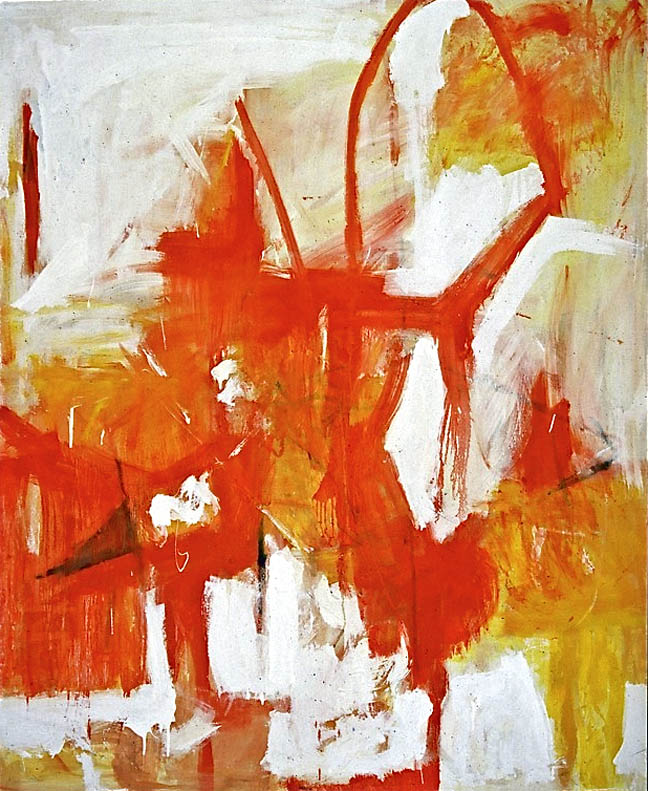

Title: August - Oil On Canvas Painting By Artist Cade Pemberton
Shipping: $100.00
Artist: N/A
Period: Contemporary
History: N/A
Origin: N/A
Condition: Excellent
Item Date: 2007
Item ID: 3114
Oil On Canvas Painting By Artist Cade Pemberton: I paint to release the power of color. A spiritual reality that shines through the surface of the world we inhabit every day. I strive to create paintings that arouse emotion or communicate an emotional state--a spirit--of their own. Since I am moved primarily by the spirit of color emanating from a painting, the biggest challenge is to let the painting speak for itself, without censoring it or over-controlling what comes through the work. Much of my work comes from intuition, letting one brush stroke indicate another. In a sense, a painting never belongs to the painter.The painter’s responsibility is to step back and ultimately let the painting create itself. I agree with what Francis Bacon said so well: “As you work,.there are certain images which suddenly take hold and you need to do them.The excitement and possibilities are in the working and can only come in the working.”
Link: http://en.wikipedia.org/wiki/Painting
Painting is the practice of applying paint, pigment, color or other medium to a surface (support base). In art, the term describes both the act and the result, which is called a painting. Paintings may have for their support such surfaces as walls, paper, canvas, wood, glass, lacquer, clay or concrete. Paintings may be decorated with gold leaf, and some modern paintings incorporate other materials including sand, clay, and scraps of paper. Painting is a mode of expression, and the forms are numerous. Drawing, composition or abstraction and other aesthetics may serve to manifest the expressive and conceptual intention of the practitioner. Paintings can be naturalistic and representational (as in a still life or landscape painting), photographic, abstract, be loaded with narrative content, symbolism, emotion or be political in nature. A portion of the history of painting in both Eastern and Western art is dominated by spiritual motifs and ideas; examples of this kind of painting range from artwork depicting mythological figures on pottery to Biblical scenes rendered on the interior walls and ceiling of The Sistine Chapel, to scenes from the life of Buddha or other scenes of eastern religious origin. What enables painting is the perception and representation of intensity. Every point in space has different intensity, which can be represented in painting by black and white and all the gray shades between. In practice, painters can articulate shapes by juxtaposing surfaces of different intensity; by using just color (of the same intensity) one can only represent symbolic shapes. Thus, the basic means of painting are distinct from ideological means, such as geometrical figures, various points of view and organization (perspective), and symbols. For example, a painter perceives that a particular white wall has different intensity at each point, due to shades and reflections from nearby objects, but ideally, a white wall is still a white wall in pitch darkness. In technical drawing, thickness of line is also ideal, demarcating ideal outlines of an object within a perceptual frame different from the one used by painters.